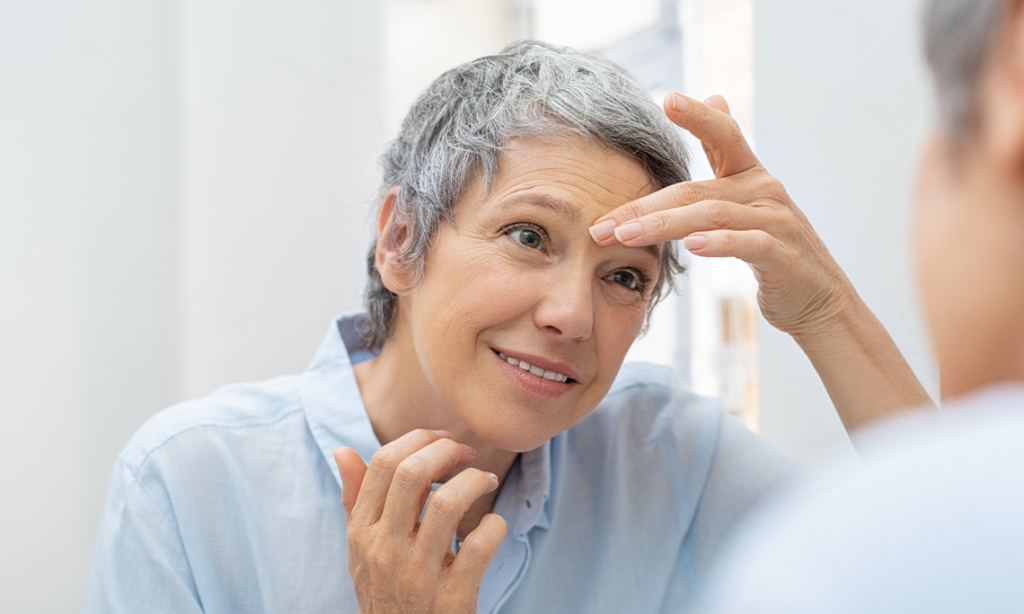Author: Aleksandra Kowalska
What does it actually mean to be aging? Why does time work to our disadvantage?
Aging is a process that we can observe in our skin – due to wrinkles – as well as reduced physical fitness or sudden illnesses. The real senility, however, is present somewhere else – at the level of cells’ molecular biology.
One of the theories claims that the whole process of aging is mainly caused by free radicals and the havoc that their excessive amount wreaks in the body. Cells exposed to this factor are damaged permanently. The loss of several hundred cells will not be noticeable (as the body naturally removes worn-out cells on its own and creates new ones to replace them), but long years of damage by free radicals can be seen in body changes that were triggered by it.
It is said that all degenerative diseases, such as cancers, arthritis, cardiovascular diseases etc., could be all perceived not as separate elements and ailments, but as particular symptoms of a single process: aging.
What do free radicals damage at the cellular level?
Fats (and more precisely, lipids) present in the cell are oxidised, which impacts, first and foremost, cell membranes and disrupts the functioning of the whole cell. During lipid peroxidation, compounds that can further interact with proteins and nucleic acids – causing their damage – are formed.
The protein is oxidised, therefore losing its properties. It becomes “useless” and even harmful. Protein modifications cause, among others, the creation of so-called “protein aggregates”, whose accumulation in the body is linked to the progressing aging process and the development of “aging-associated diseases”. Cataract is an example of such a disease. Along with the increase of abnormal proteins in the brain, neurodegenerative processes start to occur. Fibrinogen, responsible for appropriate blood coagulation, can also be a damaged protein.
The genetic code is damaged, which can lead to cell death or dysfunction. Such a dysfunctional cell can, unfortunately, divide further. DNA is being damaged by free radicals throughout the cell’s life; this may lead to its mutation at any point in life, but along with the aging process, systems responsible for reparation of this error are becoming less efficient and too slow to keep up with the progressing damage.
Mitochondrial DNA is also damaged. The “failure” of this cellular energy source can trigger dangerous consequences, especially when it occurs in a nerve cell or a cell building the heart. It’s far easier for a mutation to occur in mitochondrial, rather than in nuclear DNA, as it does not involve noncoding sequences. It’s the decreased energy production ability in a cell that is to blame for aging.
All of the above-mentioned damage may cause cell death or, in certain cases, lead to its “suicide” – by triggering a mechanism used for removal of worn-out or damaged cells. The unfortunate paradox is that the older we get, the harder it is for our body to fight free radicals, making us age faster.
So what’s the solution to protect the body against fast aging and stay youthful longer? These are “just” a few points that might not be easy at all to implement, but it’s worth trying and these will bring results real quick.
Diet. With appropriate nutrition, it’s possible to provide a significant amount of natural antioxidants which will “fight” free radicals and will reduce the effects of aging. Vitamin C, vitamin E and β-Carotene constitute important antioxidants.
Physical fitness. Staying fit for many years influences the increase in efficiency of mechanisms protecting the body against free radicals. Regular exercise that lasts for a few years may cause the enzymes fighting free radicals to maintain a constant, high activity, being more efficient in the fight against aging.
Supplementation. Taking herbal remedies, vitamins and supplements aimed at fighting free radicals is crucial in delaying the aging process. So one might ask: according to nature, shouldn’t diet itself suffice? Unfortunately, nature decided to take care of humans up until the moment when they are able to bear children and contribute to the “survival of the species”. Further slow aging did not bother nature that much (but it definitely bothers us!). An additional adverse factor is environmental pollution brought by current civilisation – something that nature was not ready for.
Detoxifying the body of harmful substances that may be a source of or may support the presence of excess amounts of free radicals in the body.
Stress management. Mental stress and activation of adaptation mechanisms helps us survive in dangerous conditions. Chronic stress, however, is an unwanted factor – as it leads to a long-term homeostasis disruption. It has been proven that stress influences accelerated shortening of telomeres (every cell’s molecular biological clock) in cells. There actually is a reason why we say that stress can turn your hair gray.
Avoiding risk factors. Preventive measures will involve avoiding smoking (active and passive), excess exposure to sunlight and limiting the intake of food increasing the level of free radicals in the body. Such foods include many processed products, e.g. powdered eggs or margarine.
It turns out that in order to prolong our youth, we have to take care of all the factors involved in the 5S strategy. Health is a complete whole and that’s the only way you can take care of it.
References:
- Barbarska O., Gacparska M., Skubiszewska A., Olędzka (2018). Rola nutrigenomiki w zdrowym starzeniu się The role of nutrigenomics in healthy aging. GERONTOLOGIA POLSKA, 3.
- Minda M., Kukuła D. (2017). Proces starzenia się a aktywność fizyczna osób starszych. Exante Wydawnictwo Naukowe.
- Trzeciak K. (2019). Wolne rodniki – śmiertelny wróg czy cichy sprzymierzeniec? Magazyn DuoLife 2/2019(8).
- Pawłowska A., Plewa-Tutaj K. (2016). Ocena wpływu wybranych czynników środowiskowych na proces starzenia się skóry.
